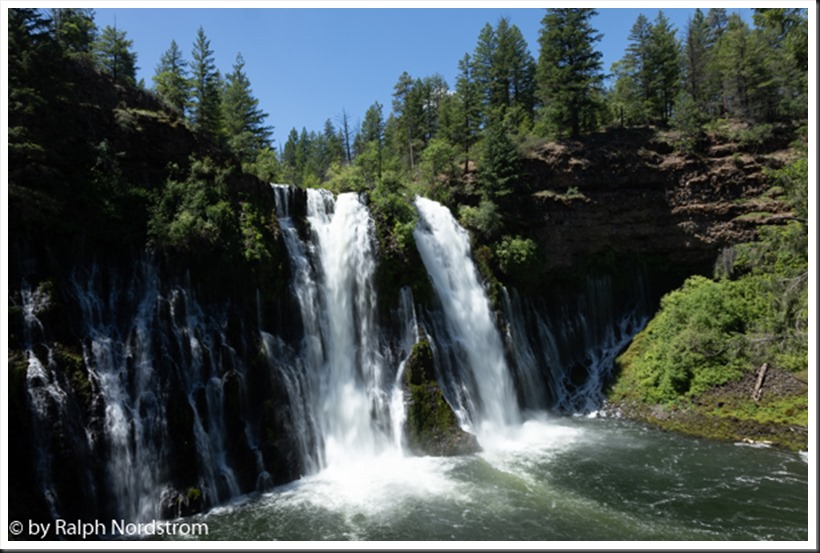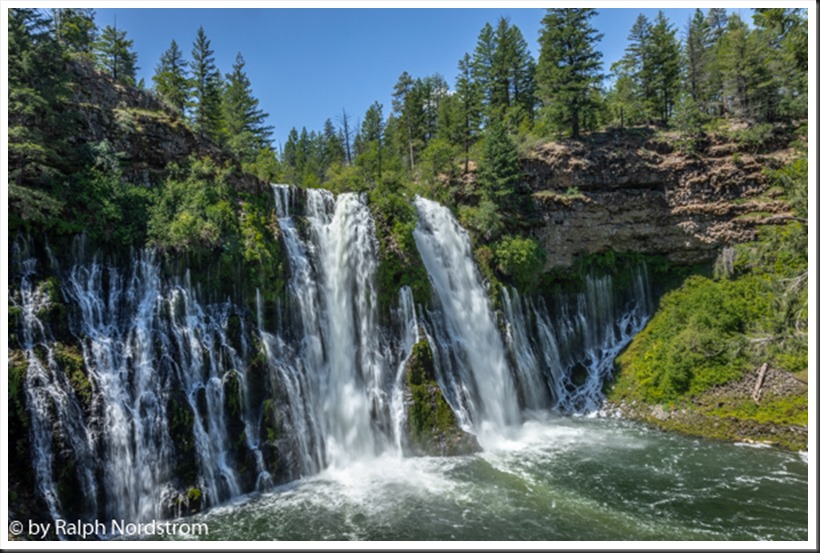“What was he thinking? What kind of picture is that? It’s not very good.”
I had heard about Burney Falls at MacArthur-Burney Falls Memorial State Park for some time. It sounded intriguing. Located in Shasta County in Northern California I wanted to see what Teddy Roosevelt called “the Eighth Wonder of the World.”
I’m up in that area twice a year. My intent was to catch it on the way home from Medford, Oregon or Crescent City, California. The only problem is it was pretty far off of I-5 and by the time the opportunity presented itself I was eager to get the 12 to 14 hour drive over with and get home.
But this year I decided to finally do it, no matter what the cost. I had spent the night in Medford and wanted to take in a volcano in Oregon I was especially interested in and then swing by the falls. From there I could leave the forests and make my way back to I-5 and continue home. I didn’t know at the time that a normal 14 hour drive was about to turn into a 19 hour marathon. But that’s a story for another time.
Road construction slowed me down but eventually I made it to the entrance, gladly payed the entrance fee and parked in the lot above the falls. The sound of the waterfall drifted over the parking area and sounded promising. I gathered my camera and tripod and walked to the trailhead. The view of the falls from there was exciting. I could hardly wait to set up and start shooting.
On the way down the trail I was thinking about the light. The best light for photographing waterfalls is when the falls are in full shade. But the sun was already shining on the water. In situations like this you learn to work with what you got.
The next thing on my mind was where I wanted to stand and the kind of composition it would make. I decided to position myself to the left and photograph the falls at an angle instead of shooting them straight on.
In a matter of a minute or two, everything was all set up and ready to go. I took a shot and checked it. The water was overexposed as expected so I took another shot but this time I underexposed it. The sunlit water was beautifully exposed but much of the image was way underexposed and ended up very dark. If that was the end of the story, memories would have been all I had and would have to suffice. But knowing what’s possible above and beyond what the camera captured is an important skill learned from experience.
“I can work with that.” Even with the images problems, I knew the effort was going to pay off. The image that was now stored on the computer’s memory card was far from what I saw and not even close to the excitement and amazement I felt. But I knew that it contained enough to work with and that I could tease out these qualities in Lightroom.
In reflecting on this later, I realized the creative vision cannot be entirely captured in a camera, no matter how sophisticated and powerful it is. All cameras have limitations (and, to be honest, all cameras can also show us things we can’t experience or see with our eyes). The camera doesn’t know what we see, and especially, it has no way of knowing what we’re feeling.
Art created with a camera is the result of a symbiotic relationship between the device itself and the human behind it. Each has something unique to contribute. Sure, the image file created by the camera has limitations, but it can beautifully render the falling water in ways we can’t even imagine. The human, through enhancements and refinements made in the digital darkroom, can recreate the experience and take the image beyond a simple snapshot (not very good in this case) to an entirely new level.
And that’s exactly what happened. Here’s what this collaboration produced. Was it worth a 19 hour drive? You be the judge.
(418)


